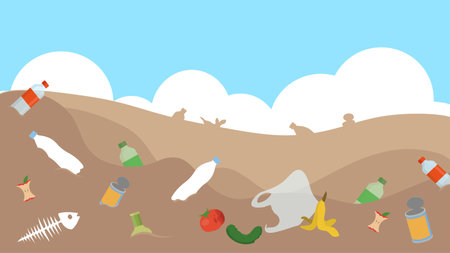Introduction to Coffee Grounds in Urban Farming
If you’re anything like me, you probably can’t start your day without a lovely cup of coffee. But have you ever wondered what happens to all those leftover coffee grounds once the kettle’s boiled and the mugs are empty? In recent years, there’s been a heart-warming shift right here in London and other bustling cities: more and more urban gardeners are giving used coffee grounds a second life in their gardens and allotments. It’s such a clever and eco-friendly way to make use of something that would otherwise end up in the bin! These tiny granules, rich in nutrients, are proving to be little powerhouses for our plants—offering a sustainable alternative for city growers who want to nourish their soil while cutting down on waste. As we see this lovely trend growing across community gardens, school allotments, and even small balcony planters, it’s hard not to feel inspired by how simple changes can make a big difference for both our families and our planet.
2. Why Coffee Grounds? Benefits for British Urban Gardens
If you’re like me, you can’t start your day without a comforting cup of coffee – and it turns out, our beloved coffee ritual is good news for our gardens too! In the heart of bustling British cities like London, urban gardeners are discovering that used coffee grounds are much more than kitchen waste; they’re a precious resource that nourishes plants, enriches compost heaps, and helps us all do our bit for the environment.
Let’s take an inviting look at why coffee grounds have become a local favourite for green-fingered Londoners and city dwellers across the UK:
The Magic of Coffee Grounds in Soil Health
Coffee grounds act as a gentle soil conditioner, breaking up heavy clay common in many British gardens and adding much-needed organic matter. This boosts drainage, improves aeration, and encourages earthworms – nature’s own little helpers. Plus, the slight acidity of coffee grounds is perfect for acid-loving plants such as rhododendrons, camellias, and blueberries, which thrive in our sometimes chalky soils.
Nutrient Content of Used Coffee Grounds
| Nutrient | Benefit for Plants |
|---|---|
| Nitrogen | Promotes leafy growth and lush foliage |
| Phosphorus | Encourages healthy root development and flower production |
| Potassium | Boosts overall plant health and resistance to disease |
| Trace Minerals (e.g., magnesium, calcium) | Supports balanced nutrition for robust growth |
Coffee Grounds as Compost Enrichers
Adding coffee grounds to your compost bin is a wonderful way to increase its nutrient value. Rich in nitrogen – what we call “green” material – they balance out “brown” materials like dry leaves and cardboard. This creates the perfect recipe for rich, crumbly compost that smells earthy (not sour!) and is just right for feeding everything from tomato plants to roses.
A Little Goes a Long Way: Top Tips for British Gardeners
- Sprinkle lightly: Don’t pile coffee grounds too thickly on beds or lawns; mix them into the topsoil or add them to your compost heap.
- Befriend your local café: Many London coffee shops are happy to share their used grounds – just ask with a smile!
- Mind the pH: Use coffee grounds around acid-loving plants or mix well with other compost ingredients to keep things balanced.
- No waste: Every spoonful you recycle keeps valuable organic matter out of landfill – a win-win for families who care about sustainability.
Coffee holds a special place in British culture, whether it’s a flat white enjoyed with friends or a quick espresso before work. Now, thanks to creative urban gardeners across London and beyond, every cuppa can also be a small step towards greener, healthier cities. Isn’t that worth raising your mug to?

3. Success Stories from London: From Brew to Bloom
Across London, countless families and community groups have discovered the magic of turning yesterday’s coffee into tomorrow’s thriving gardens. One heartwarming example comes from the “Hackney Coffee Co-Op,” where mums and dads, along with their little ones, collect used coffee grounds from local cafés every weekend. With a few wellies and plenty of giggles, they spread these grounds in the community allotment, nourishing everything from plump tomatoes to fragrant lavender. The children love getting their hands dirty, learning about sustainability in a way that feels more like play than a chore.
Another inspiring tale springs from South London’s “Green Streets Collective,” a group of neighbours who transformed an unused patch of land between terraced houses into a lush green haven. By mixing leftover grounds into the soil, theyve created nutrient-rich beds that brim with courgettes and runner beans. The project blossomed into weekly gardening sessions, bringing together people of all ages for planting, chatting, and sharing home-baked treats. The sense of belonging is palpable—everyone chips in, everyone benefits, and the street feels more like a village than a city block.
Even local schools are getting involved! At St. Mary’s Primary in Islington, teachers worked with parents to start a coffee compost initiative. With help from nearby coffee shops, they collect grounds and add them to compost bins for the school garden. Pupils marvel at how food waste can be turned into healthy soil that grows strawberries for summer snacks. This simple act has sparked broader conversations about caring for our environment—and the children are taking those lessons home.
These stories show that urban farming with coffee grounds isn’t just about growing plants—it’s about nurturing relationships and creating greener, kinder communities across London. It’s proof that even small acts, like saving your morning grounds, can help us all bloom together.
4. Expanding Beyond the Capital: Other UK Initiatives
When it comes to urban farming, London might steal the spotlight, but let’s not forget the heartening efforts blossoming in other corners of the UK. Across cities like Manchester, Bristol, and Edinburgh, creative mums, families, and whole neighbourhoods are putting used coffee grounds to work in truly inspiring ways. Their stories show that a little ingenuity—and some teamwork—can turn yesterday’s morning brew into tomorrow’s harvest.
Manchester: Mums Leading Green Changes
In Manchester, a group of mums from the Chorlton area teamed up with local cafés to collect coffee grounds for their community allotment. Together with their children, they mix coffee grounds into compost bins and garden beds, boosting soil nutrition and encouraging worms to thrive. The kids love getting their hands dirty while learning about sustainability—a win-win for families and the planet!
Bristol: Neighbourhood Networks
Bristol’s tight-knit communities have been quick to embrace the idea too. Families on one street started a “Grounds Swap” scheme—one mum collects used grounds from nearby coffee shops each week, then neighbours come by with their buckets to share. This sense of togetherness makes urban gardening not just greener, but friendlier as well.
Neighbourhood Grounds Swap Scheme Example
| City | Participants | Main Use | Community Impact |
|---|---|---|---|
| Bristol | 10 families + 2 cafes | Composting & mulching flower beds | Stronger neighbour ties, healthier plants |
| Manchester | Mums’ group + schoolchildren | Vegetable garden enrichment | Eco-education for kids, richer harvests |
| Edinburgh | Local gardening club + grandparents | Pots for herbs & reducing waste | Less landfill waste, intergenerational bonding |
Edinburgh: Grandparents Join In!
Up in Edinburgh, it’s not just young families who are excited about reusing coffee grounds. Local gardening clubs often include grandparents keen to pass down their wisdom while making eco-friendly choices. One gran told us how her grandchildren now help sprinkle grounds around strawberry pots—the berries are sweeter than ever!
A Heartfelt Takeaway for All UK Families
No matter where you live—from bustling cities to quieter suburbs—these stories prove that ordinary families can make an extraordinary difference. By working together and sharing simple ideas like recycling coffee grounds, we can nurture our gardens and our communities at the same time. Why not give it a try with your own family or neighbours? You might be surprised at how much fun (and flavour!) you can grow together.
5. Practical Tips for Getting Started at Home
If you’re thinking of introducing coffee grounds into your urban garden, whether in your cosy back garden or a shared local allotment, here’s a gentle, mum-to-mum guide to get you started safely and effectively. Coffee grounds can be a brilliant addition to your gardening routine, but it’s important to use them wisely for the best results.
How to Collect Coffee Grounds Safely
First things first, if you’re not much of a coffee drinker yourself, don’t worry! Many local cafés across London are happy to share their used grounds with keen gardeners—just pop in with a friendly smile and ask if they have any spare. Make sure the grounds are fresh (within 24 hours) and haven’t started to mould, as stale grounds can harbour unwanted bacteria.
Storing Your Coffee Grounds
Once you’ve gathered your coffee treasures, store them in an airtight container or compostable bag. Keep them somewhere cool and dry; your shed or kitchen cupboard will do nicely. If you plan to keep them longer than a few days, spread them out on a tray to dry before storing. This prevents any nasty odours and keeps mould at bay—no one wants that in their garden!
Using Coffee Grounds in Your Garden
Coffee grounds are best added directly to your compost heap, where they’ll mingle with other kitchen scraps and garden waste. They break down beautifully and add valuable nitrogen. You can also sprinkle small amounts—no more than a thin layer—around acid-loving plants like blueberries, roses, or hydrangeas. Too much can upset the balance of your soil, so moderation is key.
A Few Words of Caution
Remember, while worms love coffee grounds, some pets might not! Keep curious little hands and paws away from fresh piles until they’re mixed into compost or soil. And always avoid using grounds from flavoured coffees, which may contain additives not suitable for plants.
Mum’s Little Secret: Community Sharing
If you find yourself with more grounds than you can use, why not share with neighbours or fellow allotment holders? It’s a lovely way to build community spirit—and swap gardening tips over a cuppa!
By following these simple steps, you’ll be well on your way to giving those humble coffee grounds a new lease of life in your own patch of London green. Happy gardening!
6. Community Spirit: How Local Cafés and Households Can Help
One of the most heart-warming aspects of using coffee grounds in urban farming is how it brings communities together, right here in London and across the UK. When neighbours, local cafés, and small businesses join forces, something truly magical happens—not only do we reduce waste, but we also nurture our green spaces with a real sense of pride and togetherness. Imagine popping into your favourite café for a flat white and coming away with a bag of used coffee grounds to enrich your allotment or balcony garden! It’s these little acts that make our neighbourhoods feel more connected and sustainable.
The Power of Neighbourhood Collaboration
It all starts with a simple conversation—perhaps at the school gates or over a garden fence—about how many of us would love to see less waste and more greenery in our city. Local households can team up to collect used coffee grounds from nearby cafés, who are often more than happy to donate what would otherwise end up in landfill. By working hand-in-hand, residents and small businesses create a network of support that benefits everyone: greener gardens, healthier plants, and a stronger sense of community spirit.
Setting Up a Coffee Grounds Collection Scheme
If you’re feeling inspired to get involved, setting up a collection scheme in your neighbourhood is easier than you might think! Start by chatting to your local coffee shop owners—they’re usually delighted to help out if they know the grounds will be put to good use. Next, gather a few like-minded neighbours or fellow parents at school drop-off. Decide on collection days and storage containers (an old ice cream tub or sturdy bucket does the trick). Then, share your plans on local WhatsApp groups or community noticeboards so others can join in too.
Celebrating Small Wins Together
Every handful of coffee grounds reused is a small victory for sustainability—and every collaborative effort brings us closer as a community. Whether you’re growing strawberries in window boxes or tending vegetables at the local allotment, knowing that your plants are thriving thanks to the kindness of neighbours and baristas adds an extra sprinkle of joy. So why not pop into your local café this week and start the conversation? You might just spark a community movement that transforms urban farming in your area—and makes London even greener for generations to come.
7. Conclusion: A Greener, More Connected Urban Future
As we’ve seen from London’s inspiring urban farms and innovative gardening projects, using coffee grounds is more than just a clever way to recycle—it’s a shining example of British resourcefulness and community spirit. These success stories remind us that small, everyday actions can spark big changes for our cities and the environment. By working together—whether it’s neighbours sharing tips over the fence, children helping their parents sprinkle coffee grounds in window boxes, or schools starting composting clubs—we’re not only greening our spaces but also strengthening bonds within our communities. So why not gather your family and give this eco-friendly practice a go? Embracing these simple habits could make a world of difference for our health, our urban wildlife, and the future of our beloved British cities. Let’s keep nurturing both our gardens and our sense of togetherness—one used coffee ground at a time.

